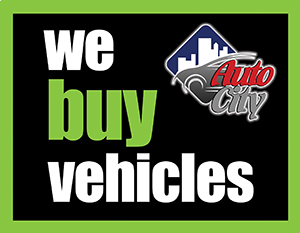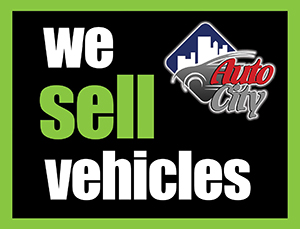
Introduction
When it comes time to upgrade your vehicle, maximizing its trade-in value is crucial. Whether you’re looking to trade in your car, truck, or SUV, understanding the factors that influence trade-in values and implementing effective strategies can significantly boost your return. In this article, we will provide you with five valuable tips to help you enhance the trade-in value of your vehicle. From maintaining a proper maintenance record to addressing mechanical issues, we will guide you through the process of increasing the value of your trade-in. By following these tips, you can ensure that you receive the best possible offer from dealerships and get closer to driving your dream vehicle
1.Understand the Factors Affecting Trade-in Value
1.1 Importance of Trade-in Value
When it comes time to part ways with your beloved vehicle, understanding its trade-in value is crucial. Trade-in value determines how much the dealership is willing to offer you in exchange for your old ride, which can significantly impact your budget for a new one. The higher the trade-in value, the more negotiating power you’ll have in the car-buying process.
1.2 Factors Influencing Trade-in Value
Several factors come into play when determining your vehicle’s trade-in value. The most significant factors include the vehicle’s age, mileage, overall condition (both mechanical and cosmetic), market demand, and any previous accidents or damages. Being aware of these factors allows you to assess the strengths and weaknesses of your trade-in and take steps to maximize its value.
2.Maintain a Proper Maintenance Record
2.1 Importance of Maintenance Records
Just like a good cup of coffee, a well-documented maintenance history adds value to your vehicle. Keeping track of regular maintenance, such as oil changes, tire rotations, and fluid top-offs, shows that you’ve taken care of your car and signals to potential buyers that it is less likely to encounter unexpected issues down the road.
2.2 Keeping Track of Regular Maintenance
Maintaining a proper maintenance record is as simple as holding onto your service receipts and organizing them chronologically. By having a comprehensive record, you can present it to the dealership when negotiating your trade-in value, demonstrating the care you’ve given to your vehicle.
2.3 Documenting Repairs and Upgrades
In addition to regular maintenance, any repairs or upgrades you’ve made can also increase your vehicle’s trade-in value. Keep records of these improvements, whether it’s a new set of tires, a replaced transmission, or an upgraded sound system. By highlighting these enhancements, you can make a stronger case for a higher trade-in value.
3.Enhance the Vehicle’s Exterior and Interior Appearance
3.1 Cleaning and Detailing the Exterior
First impressions matter, even when it comes to trade-ins. Giving your vehicle a thorough cleaning and detailing both inside and out can significantly boost its appeal. Wash away the evidence of your road trips and vacuum out any lingering crumbs—it’s amazing how much of an impact a clean car can make.
3.2 Sprucing Up the Interior
The interior of your vehicle should be a sanctuary, not a storage unit. Remove any personal belongings, tidy up the floors and seats, and consider using fabric fresheners to eliminate any unwanted odors. If your seats or carpets are stained, it might be worth investing in professional upholstery cleaning.
3.3 Repairing Any Damages
Curb appeal extends beyond a shiny exterior. Take a critical eye to your vehicle and address any damages such as dents, scratches, or chipped paint. Small touch-ups or professional repairs can go a long way in enhancing your trade-in value.
4.Address Any Mechanical or Functional Issues
4.1 Identifying and Resolving Mechanical Problems
Noisy brakes, finicky transmissions, and mysterious engine sounds can put a dent in your vehicle’s trade-in value. Before heading to the dealership, identify and resolve any mechanical issues. It’s often a good idea to have a trusted mechanic inspect your vehicle to pinpoint any hidden problems you may have missed.
4.2 Fixing Functional Issues
Beyond mechanical problems, ensure that your vehicle’s functionality is in tip-top shape. Malfunctioning lights, broken power windows, or faulty air conditioning can be red flags to potential buyers. Taking care of these functional issues not only increases your trade-in value but also makes for a smoother transaction.
4.3 Consultation with a Mechanic
If you’re unsure about the condition of your vehicle or need guidance in addressing any mechanical or functional issues, don’t hesitate to consult a professional mechanic. They can provide valuable advice and help you prioritize repairs based on their impact on trade-in value.
By following these tips, you’ll be well-prepared to boost your vehicle’s trade-in value and navigate the car-buying process with confidence. Remember, a little effort can go a long way in maximizing what you get for your four-wheeled companion.
5.Research and Determine the Right Time to Trade-in
5.1 Market Demand and Seasonal Trends
When it comes to trading in your vehicle, timing is everything. Take some time to research and understand the market demand for your specific make and model. Are similar vehicles in high demand? Are there any seasonal trends that affect prices? By being aware of these factors, you can choose the right time to trade in your vehicle when you’re more likely to get a better value.
5.2 Timing the Trade-in for Maximum Value
Timing is not just about understanding market demand, but also about finding the ideal moment to trade in your vehicle. Consider factors like the mileage on your car, its overall condition, and any upcoming maintenance or repairs. If you wait too long, these factors might decrease your trade-in value. Conversely, if you trade in too soon, you might not get the most out of your investment. Strike the perfect balance to maximize your trade-in value.
5.3 Monitoring Resale Values
Keep a close eye on the resale values of vehicles similar to yours. Various online resources provide information on the approximate worth of different makes and models. By staying updated on resale values, you’ll have a clearer understanding of the potential trade-in value for your vehicle. This knowledge will help you negotiate with confidence when dealing with dealerships.
6.Consider Professional Detailing and Cleaning Services
6.1 Benefits of Professional Detailing
Before trading in your vehicle, invest in professional detailing and cleaning services. A clean and well-maintained car creates a positive first impression and can significantly increase its value. Professional detailing services can address both interior and exterior aspects, making your vehicle look its best. From thorough cleaning to removing any minor scratches, these services can work wonders in improving your trade-in value.
6.2 Finding Reputable Detailing Services
Finding reputable detailing services is essential to ensure the best results. Ask for recommendations from friends, check online reviews, or consult local automotive enthusiasts for trusted professionals in your area. Look for detailing services that have a track record of providing high-quality work and have experience working with the type of vehicle you own. Don’t hesitate to ask for before-and-after photos or references from previous customers.
6.3 Budgeting for Professional Cleaning
Budgeting for professional detailing is an important aspect of boosting your trade-in value. While these services come at a cost, the return on investment can be significant. Consider the potential increase in trade-in value and weigh it against the cost of detailing. In most cases, the investment will pay off, as a clean and presentable vehicle is more likely to attract better offers from dealerships.
7.Present a Comprehensive Vehicle History Report
7.1 Importance of a Vehicle History Report
A comprehensive vehicle history report is a valuable tool when trading in your vehicle. It provides potential buyers with information about your car’s maintenance records, accident history, and ownership details. By presenting a detailed and accurate report, you instill confidence in the buyer and demonstrate that your vehicle has been well-maintained throughout its life.
7.2 Gathering Necessary Documentation
To create a comprehensive vehicle history report, gather all the necessary documentation related to your vehicle. This includes maintenance and repair records, proof of regular servicing, accident reports, and any warranty information. Organize these documents in a clear and concise manner so that they can be easily presented to potential buyers or dealerships.
7.3 Ensuring Accuracy of Vehicle History
When compiling your vehicle history report, pay close attention to accuracy. Double-check all the facts, dates, and details to ensure there are no errors or discrepancies. Inaccurate information can raise concerns and lower the perceived value of your vehicle. It’s always better to verify and correct any inaccuracies before presenting the report to potential buyers or dealerships.
8.Negotiate and Communicate Effectively with Dealerships
8.1 Researching Trade-in Values and Offers
Before entering into negotiations with dealerships, research trade-in values and offers for vehicles similar to yours. This knowledge will give you a baseline to work with during negotiations and prevent you from accepting undervalued offers. Online resources and dealership websites often provide estimated trade-in values for different makes and models, helping you gauge fair market value.
8.2 Preparing for Negotiations
Negotiations can be intimidating, but proper preparation can boost your confidence. Take time to gather research and have a clear understanding of your vehicle’s condition, trade-in value, and any competing offers. Set a realistic minimum trade-in value that you are willing to accept and be prepared to walk away if the dealership doesn’t meet your expectations. Remember, there are always other dealerships willing to negotiate.
8.3 Communicating Your Trade-in’s Value
During negotiations, effectively communicate the value of your trade-in. Highlight its positive aspects, such as low mileage, additional features, or recent upgrades. Be confident in presenting supporting evidence, such as the vehicle history report and any maintenance records. By effectively communicating the value of your trade-in, you increase your chances of getting a better deal from the dealership.
By implementing these five tips, you can greatly improve the trade-in value of your vehicle. Understanding the factors that affect trade-in value, maintaining a proper maintenance record, enhancing the appearance, addressing any mechanical issues, researching the right time to trade-in, considering professional detailing, presenting a comprehensive vehicle history report, and negotiating effectively with dealerships are all essential steps to maximize the value of your trade-in. So, follow these tips and get ready to secure a better deal when trading in your vehicle. Happy car shopping!
FAQ
- Can I increase the trade-in value of my vehicle without spending a lot of money?
Absolutely! While investing in some maintenance and repairs can certainly help boost the trade-in value, there are several cost-effective ways to enhance your vehicle’s value. Simple tasks like cleaning, decluttering, and addressing minor cosmetic issues can make a significant difference without breaking the bank.
- How can I determine the right time to trade-in my vehicle?
Timing plays a crucial role in maximizing your vehicle’s trade-in value. Factors such as market demand, seasonal trends, and even the age and mileage of your car come into play. Researching market values, monitoring resale trends, and consulting with experts can help you determine the optimal time to trade-in your vehicle.
- Should I disclose any previous accidents or repairs when presenting a vehicle history report?
Yes, it is important to provide as accurate and comprehensive information as possible when presenting a vehicle history report. Be transparent about any accidents, repairs, or upgrades made to your vehicle. Honesty builds trust and ensures that potential buyers or dealerships have all the necessary information to evaluate the value of your trade-in.


